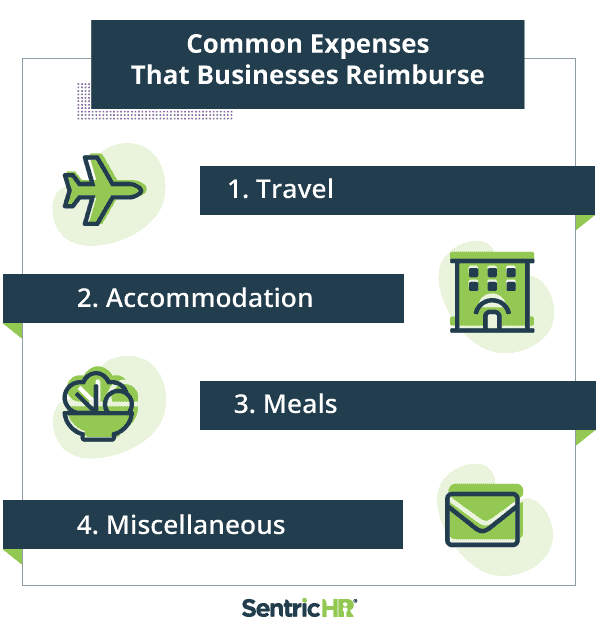Key Points about expense reimbursement and taxability:
- Businesses are not federally required to reimburse employees. But many businesses still issue reimbursements for reasonable expenses.
- Most expenses fall into four categories: travel, accommodation, meals, and miscellaneous.
- Whether your reimbursements are taxable will depend on the type of reimbursement plan your business uses.
Employees sometimes spend their own money on work-related items or services. Whether it’s a new keyboard, a plane ticket, or a course fee, your business may choose to reimburse these expenses.
A business expense policy can help you reimburse employees consistently and fairly. But deciding what expenses to reimburse and how those reimbursements affect taxes can be tricky.
Getting familiar with expense reimbursement and taxability can help you stay compliant and draft the best policy for your business.
Complying with Expense Reimbursement Requirements
Under the Fair Labor Standards Act (FLSA), you are not federally required to reimburse employees for work-related expenses unless these expenses would cause the employee’s pay rate to fall below minimum wage.
However, some states have their own requirements that overrule the Federal law. For instance, California, the District of Columbia, Illinois, Iowa, Massachusetts, Montana, and New York require you to reimburse employees for reasonable business-related expenses. Each state may also have specific rules. California, for example, requires you to reimburse employees who use their personal cell phones for work-related calls.
Check all state and local legislation to ensure you stay compliant. If there are no state or local mandates, the Federal rules will apply.
Common Expenses That Businesses Reimburse
While it isn’t federally required to reimburse employees, many businesses still do so. The expenses most companies reimburse generally fall into four categories.
Travel
Travel expenses include things like:
- Airfare
- Train fare
- Taxi, Uber, Lyft, etc. fare
- Car rentals
- Mileage
Some business also include:
- Parking
- Baggage
- Visa or passport fees
- Foreign currency exchange fees
- Foreign transaction fees for credit or debit cards
- Cell phone or SIM card fees
- Travel insurance
Accommodation
Accommodation expenses include lodging fees, such as the cost of a hotel room, Airbnb booking, or any other accommodation.
Meals
Meal expenses typically include meals employees purchase while travelling or entertaining clients.
Miscellaneous
This category covers everything that doesn’t fit neatly into one of the categories above. This may include:
- Office supplies or equipment
- Postage
- Medical expenses
- Training or exam fees
These are loose categories – it may make more sense to group your expenses differently. Likewise, the expenses you cover may depend on the employee requesting reimbursement. For instance, a salesperson may require reimbursement for meals while travelling or entertaining clients. An accountant, on the other hand, probably doesn’t travel or entertain clients. Because of this, you wouldn’t reimburse the accountant for meals. When crafting your expense policy, be sure to mention these distinctions.

Are Expense Reimbursements Taxable?
Reimbursements are payments to employees. So, are they reported as income? Are they taxable? The answer depends on what type of reimbursement plan you use.
Accountable Plan
In general, your reimbursements are not taxable if you use an accountable plan. To have an accountable plan, you must meet all three of the following criteria:
- An employee incurs an expense that is business-related or paid “while performing services as an employee” of your organization.
- The employee documents the amount, time, place, and purpose of the expense and submits them to you within a reasonable amount of time.
- The employee returns any excess reimbursement to you within a reasonable amount of time.
According to the IRS, a “reasonable amount of time” differs depending on the circumstances. In general, though, they define a reasonable amount of time as:
- 60 days for an employee to properly document and submit their expense to you
- 30 days for you to issue a reimbursement to an employee
- 120 days for an employee to return any excess reimbursement
As long as everyone complies with the requirements above, reimbursements under accountable plans are not considered wages and are not taxed. As a result, you should not include reimbursements in Box 1 on the employee’s Form W-2.
If you have an accountable plan but do not comply with the three guidelines above, then the reimbursement will be taxable.
Non-Accountable Plan
In general, your reimbursements are taxable if you use a non-accountable plan. You have a non-accountable plan if you do not meet the three requirements for an accountable plan. Essentially, you have a non-accountable plan if:
- Employees do not need to submit expenses in a timely manner.
- Employees do not need to return excess reimbursement to you within a reasonable amount of time.
- You issue a reimbursement that would otherwise be considered wages (for example, a monthly allowance for travel that is already factored into an employee’s salary).
Reimbursements under non-accountable plans are considered wages and therefore are taxed. As such, you will need to include them in Box 1 on the employee’s Form W-2.
Per Diem Plan
Some businesses use a per diem plan to reimburse employees traveling for work-related purposes. Per diem plans provide a daily allowance for fixed expenses such as car allowances and meals.
In general, allowances provided under a per diem plan are not taxable so long as they do not exceed the established per diem rates.
If your allowance is less than or equal to the Federal rate, you don’t need to include them in Box 1 on the employee’s Form W-2.
However, if your allowance is greater than the Federal rate, the excess amount will be taxed. You will need to include your allowance amount up to the Federal rate under Code L in Box 12 on the employee’s Form W-2. This amount will not be taxed. You must then include the excess amount in Box 1 of the employee’s Form W-2. This amount will be taxed.
Please click here to see the most up-to-date per diem rates.
For more information about the per diem reimbursement process, please click here.
Streamline Your Reimbursement Process
Whether you use an accountable, a non-accountable, or a per diem plan, expense management software can make your reimbursement process even easier.
SentricHR is an all-in-one HRIS with expense management so you can handle all of your people processes in one place. Your employees can snap photos of receipts and other documents for immediate upload while approved reimbursements are automatically captured in payroll.
For more information about how SentricHR can streamline your expense management, speak with one of our product experts.
A business expense policy can help you and your employees stay compliant. For a Business Expense Policy template, please click here.









